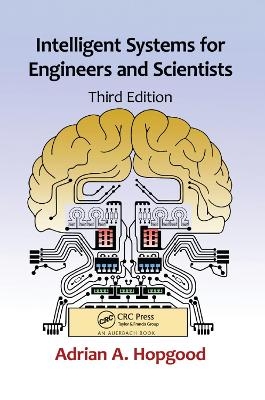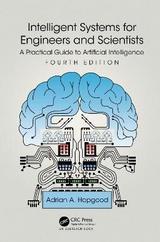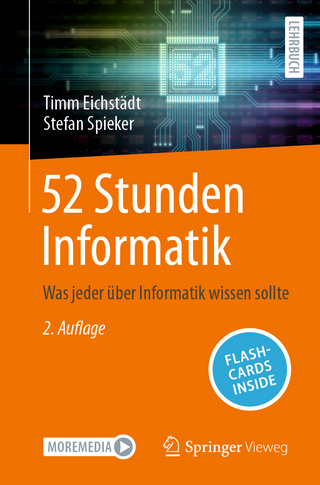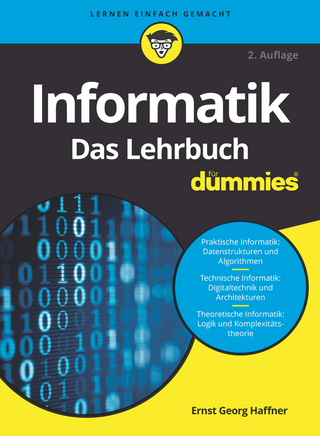
Intelligent Systems for Engineers and Scientists
CRC Press (Verlag)
978-1-138-37428-7 (ISBN)
- Titel erscheint in neuer Auflage
- Artikel merken
Using clear and concise language, Intelligent Systems for Engineers and Scientists, Third Edition features updates and improvements throughout all chapters. It includes expanded and separated chapters on genetic algorithms and single-candidate optimization techniques, while the chapter on neural networks now covers spiking networks and a range of recurrent networks. The book also provides extended coverage of fuzzy logic, including type-2 and fuzzy control systems. Example programs using rules and uncertainty are presented in an industry-standard format, so that you can run them yourself.
The first part of the book describes key techniques of artificial intelligence—including rule-based systems, Bayesian updating, certainty theory, fuzzy logic (types 1 and 2), frames, objects, agents, symbolic learning, case-based reasoning, genetic algorithms, optimization algorithms, neural networks, hybrids, and the Lisp and Prolog languages. The second part describes a wide range of practical applications in interpretation and diagnosis, design and selection, planning, and control.
The author provides sufficient detail to help you develop your own intelligent systems for real applications. Whether you are building intelligent systems or you simply want to know more about them, this book provides you with detailed and up-to-date guidance.
Check out the significantly expanded set of free web-based resources that support the book at: http://www.adrianhopgood.com/aitoolkit/
Adrian Hopgood earned his BSc from the University of Bristol, PhD from the University of Oxford, and MBA from the Open University. After completing his PhD in 1984, he spent 2 years developing applied intelligent systems for Systems Designers PLC. That experience set the direction of his career toward the investigation of intelligent systems and their practical applications. After leaving Systems Designers, he spent 14 years at the Open University and remains attached as a visiting professor. During that period, he also spent 2 years at Telstra Research Laboratories in Australia, investigating the role of intelligent systems in telecommunications. He has subsequently worked for Nottingham Trent University, De Montfort University, and Sheffield Hallam University. Despite assuming senior management positions, he has not lost his passion for intelligent systems. He has recently led the development of an open-source blackboard system, DARBS. His Website is www.adrianhopgood.com.
Introduction
Intelligent Systems
A Spectrum of Intelligent Behavior
Knowledge-Based Systems
The Knowledge Base
Rules and Facts
Inference Networks
Semantic Networks
Deduction, Abduction, and Induction
The Inference Engine
Declarative and Procedural Programming
Expert Systems
Knowledge Acquisition
Search
Computational Intelligence
Integration with Other Software
Further Reading
Rule-Based Systems
Rules and Facts
A Rule-Based System for Boiler Control
Rule Examination and Rule Firing
Maintaining Consistency
The Closed-World Assumption
Use of Local Variables within Rules
Forward Chaining (a Data-Driven Strategy)
Single and Multiple Instantiation of Local Variables
Rete Algorithm
Conflict Resolution
First Come, First Served
Priority Values
Metarules
Backward Chaining (a Goal-Driven Strategy)
The Backward-Chaining Mechanism
Implementation of Backward Chaining
Variations of Backward Chaining
Format of Backward-Chaining Rules
A Hybrid Strategy
Explanation Facilities
Summary
Further Reading
Handling Uncertainty: Probability and Fuzzy Logic
Sources of Uncertainty
Bayesian Updating
Representing Uncertainty by Probability
Direct Application of Bayes’ Theorem
Likelihood Ratios
Using the Likelihood Ratios
Dealing with Uncertain Evidence
Combining Evidence
Combining Bayesian Rules with Production Rules
A Worked Example of Bayesian Updating
Discussion of the Worked Example
Advantages and Disadvantages of Bayesian Updating
Certainty Theory
Introduction
Making Uncertain Hypotheses
Logical Combinations of Evidence
Conjunction
Disjunction
Negation
A Worked Example of Certainty Theory
Discussion of the Worked Example
Relating Certainty Factors to Probabilities
Fuzzy Logic: Type-1
Crisp Sets and Fuzzy Sets
Fuzzy Rules
Defuzzification
Stage 1: Scaling the Membership Functions
Stage 2: Finding the Centroid
Defuzzifying at the Extremes
Sugeno Defuzzification
A Defuzzification Anomaly
Fuzzy Control Systems
Crisp and Fuzzy Control
Fuzzy Control Rules
Defuzzification in Control Systems
Fuzzy Logic: Type-2
Other Techniques
Dempster–Shafer Theory of Evidence
Inferno
Summary
Further Reading
Agents, Objects, and Frames
Birds of a Feather: Agents, Objects, and Frames
Intelligent Agents
Agent Architectures
Logic-Based Architectures
Emergent Behavior Architectures
Knowledge-Level Architectures
Layered Architectures
Multiagent Systems
Benefits of a Multiagent System
Building a Multiagent System
Contract Nets
Cooperative Problem-Solving (CPS)
Shifting Matrix Management (SMM)
Comparison of Cooperative Models
Communication between Agents
Swarm Intelligence
Object-Oriented Systems
Introducing OOP
An Illustrative Example
Data Abstraction
Classes
Instances
Attributes (or Data Members)
Operations (or Methods or Member Functions)
Creation and Deletion of Instances
Inheritance
Single Inheritance
Multiple and Repeated Inheritance
Specialization of Methods
Class Browsers
Encapsulation
Unified Modeling Language (UML)
Dynamic (or Late) Binding
Message Passing and Function Calls
Metaclasses
Type Checking
Persistence
Concurrency
Active Values and Daemons
OOP Summary
Objects and Agents
Frame-Based Systems
Summary: Agents, Objects, and Frames
Further Reading
Symbolic Learning
Introduction
Learning by Induction
Overview
Learning Viewed as a Search Problem
Techniques for Generalization and Specialization
Universalization
Replacing Constants with Variables
Using Conjunctions and Disjunctions
Moving up or down a Hierarchy
Chunking
Case-Based Reasoning (CBR)
Storing Cases
Abstraction Links and Index Links
Instance-of Links
Exemplar Links
Failure Links
Retrieving Cases
Adapting Case Histories
Null Adaptation
Parameterization
Reasoning by Analogy
Critics
Reinstantiation
Dealing with Mistaken Conclusions
Summary
Further Reading
Single-Candidate Optimization Algorithms
Optimization
The Search Space
Searching the Parameter Space
Hill-Climbing and Gradient Descent Algorithms
Hill-Climbing
Steepest Gradient Descent or Ascent
Gradient-Proportional Descent or Ascent
Conjugate Gradient Descent or Ascent
Tabu Search
Simulated Annealing
Summary
Further Reading
Genetic Algorithms for Optimization
Introduction
The Basic GA
Chromosomes
Algorithm Outline
Crossover
Mutation
Validity Check
Selection
Selection Pitfalls
Fitness-Proportionate Selection
Fitness Scaling for Improved Selection
Linear Fitness Scaling
Sigma Scaling
Linear Rank Scaling
Nonlinear Rank Scaling
Probabilistic Nonlinear Rank Scaling
Truncation Selection
Transform Ranking
Tournament Selection
Comparison of Selection Methods
Elitism
Multiobjective Optimization
Gray Code
Building Block Hypothesis
Schema Theorem
Inversion
Selecting GA Parameters
Monitoring Evolution
Genetic Programming
Other Forms of Population-Based Optimization
Summary
Further Reading
Neural Networks
Introduction
Neural Network Applications
Classification
Nonlinear Estimation
Clustering
Content-Addressable Memory
Nodes and Interconnections
Single and Multilayer Perceptrons
Network Topology
Perceptrons as Classifiers
Training a Perceptron
Buffered Perceptrons
Some Practical Considerations
Recurrent Networks
Simple Recurrent Network (SRN)
Hopfield Network
MAXNET
The Hamming Network
Unsupervised Networks
Adaptive Resonance Theory (ART) Networks
Kohonen Self-Organizing Networks
Radial Basis Function Networks
Spiking Neural Networks
Summary
Further Reading
Hybrid Systems
Convergence of Techniques
Blackboard Systems for Multifaceted Problems
Parameter Setting
Genetic–Neural Systems
Genetic–Fuzzy Systems
Capability Enhancement
Neuro–Fuzzy Systems
Baldwinian and Lamarckian Inheritance in Genetic Algorithms
Learning Classifier Systems
Clarification and Verification of Neural Network Outputs
Summary
Further Reading
Artificial Intelligence Programming Languages
A Range of Intelligent Systems Tools
Features of AI Languages
Lists
Other Data Types
Programming Environments
Lisp
Background
Lisp Functions
A Worked Example
Prolog
Background
Backtracking in Prolog
Comparison of AI Languages
Summary
Further Reading
Systems for Interpretation and Diagnosis
Introduction
Deduction and Abduction for Diagnosis
Exhaustive Testing
Explicit Modeling of Uncertainty
Hypothesize-and-Test
Depth of Knowledge
Shallow Knowledge
Deep Knowledge
Shallow and Deep Knowledge
Model-Based Reasoning
The Limitations of Rules
Modeling Function, Structure, and State
Function
Structure
State
Using the Model
Monitoring
Tentative Diagnosis
The Shotgun Approach
Structural Isolation
The Heuristic Approach
Fault Simulation
Fault Repair
Using Problem Trees
Summary of Model-Based Reasoning
Case Study: A Blackboard System for Interpreting Ultrasonic Images
Ultrasonic Imaging
Agents in DARBS
Rules in DARBS
The Stages of Image Interpretation
Arc Detection Using the Hough Transform
Gathering the Evidence
Defect Classification
The Use of Neural Networks
Defect Classification Using a Neural Network
Echodynamic Classification Using a Neural Network
Combining the Two Applications of Neural Networks
Rules for Verifying Neural Networks
Summary
Further Reading
Systems for Design and Selection
The Design Process
Design as a Search Problem
Computer-Aided Design
The Product Design Specification (PDS): A Telecommunications Case Study
Background
Alternative Views of a Network
The Classes
Network
Link
Site
Information Stream
Equipment
Summary of PDS Case Study
Conceptual Design
Constraint Propagation and Truth Maintenance
Case Study: Design of a Lightweight Beam
Conceptual Design
Optimization and Evaluation
Detailed Design
Design as a Selection Exercise
Overview
Merit Indices
The Polymer Selection Example
Two-Stage Selection
Constraint Relaxation
A Naive Approach to Scoring
A Better Approach to Scoring
Case Study: Design of a Kettle
Reducing the Search Space by Classification
Failure Mode and Effects Analysis (FMEA)
Summary
Further Reading
Systems for Planning
Introduction
Classical Planning Systems
STRIPS
General Description
An Example Problem
A Simple Planning System in Prolog
Considering the Side Effects of Actions
Maintaining a World Model
Deductive Rules
Hierarchical Planning
Description
Benefits of Hierarchical Planning
Hierarchical Planning with ABSTRIPS
Postponement of Commitment
Partial Ordering of Plans
The Use of Planning Variables
Job-Shop Scheduling
The Problem
Some Approaches to Scheduling
Constraint-Based Analysis
Constraints and Preferences
Formalizing the Constraints
Identifying the Critical Sets of Operations
Sequencing in Disjunctive Case
Sequencing in Nondisjunctive Case
Updating Earliest Start Times and Latest Finish Times
Using Constraints and Preferences
Replanning and Reactive Planning
Summary
Further Reading
Systems for Control
Introduction
Low-Level Control
Open-Loop Control
Feedforward Control
Feedback Control
First- and Second-Order Models
Algorithmic Control: The PID Controller
Bang-Bang Control
Requirements of High-Level (Supervisory) Control
Blackboard Maintenance
Time-Constrained Reasoning
Prioritization of Processes
Approximation
Approximate Search
Data Approximations
Knowledge Approximations
Single and Multiple Instantiation
Fuzzy Control
The BOXES Controller
The Conventional BOXES Algorithm
Fuzzy BOXES
Neural Network Controllers
Direct Association of State Variables with Action Variables
Estimation of Critical State Variables
Statistical Process Control (SPC)
Applications
Collecting the Data
Using the Data
Summary
Further Reading
The Future of Intelligent Systems
Benefits
Trends in Implementation
Intelligent Systems and the Internet
Ubiquitous Intelligent Systems
Conclusion
References
Index
| Erscheinungsdatum | 21.01.2019 |
|---|---|
| Zusatzinfo | 163; 9 Tables, black and white; 180 Illustrations, black and white |
| Verlagsort | London |
| Sprache | englisch |
| Maße | 156 x 234 mm |
| Gewicht | 635 g |
| Themenwelt | Mathematik / Informatik ► Informatik ► Theorie / Studium |
| Technik ► Elektrotechnik / Energietechnik | |
| ISBN-10 | 1-138-37428-8 / 1138374288 |
| ISBN-13 | 978-1-138-37428-7 / 9781138374287 |
| Zustand | Neuware |
| Informationen gemäß Produktsicherheitsverordnung (GPSR) | |
| Haben Sie eine Frage zum Produkt? |
aus dem Bereich



